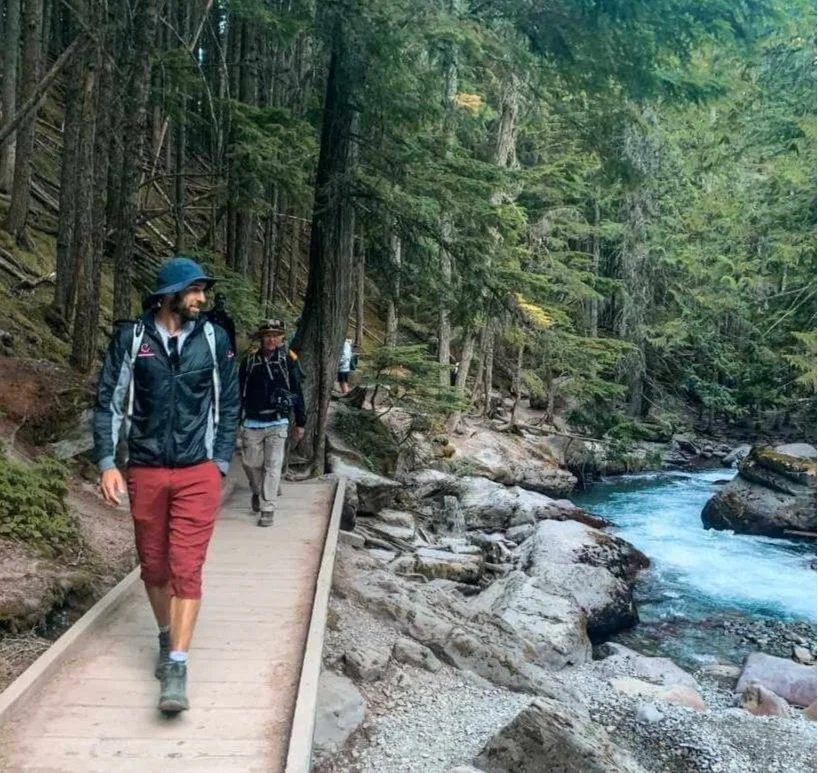When the sun is shining and the trails are calling, it’s time to wear your best summer hiking outfits and venture out into the great outdoors. But with so many options available, how do you choose the proper attire for your summer adventure? This comprehensive guide will explore the importance of selecting the right gear, the essential components of a summer hiking outfit, and some tips to keep you comfortable and protected on the trail.
Why Choosing the Right Summer Hiking Outfits Matters
Selecting the appropriate summer hiking outfits is crucial for a comfortable and enjoyable outdoor experience. Two key factors come into play when choosing the right gear: comfort and protection.
Importance of comfort and breathability
In the summer, temperatures can soar, making it essential to wear clothing that allows your skin to breathe and wick away sweat. Wearing the wrong attire can lead to overheating, chafing, and general discomfort, ultimately detracting from your hiking experience.
Protection from sun and insects
Besides keeping you comfortable, your summer hiking outfits should protect you from the sun’s harmful rays and pesky insects. Prolonged sun exposure can lead to sunburn and other harmful effects, while insects like mosquitoes and ticks can transmit diseases.
Essential Components of a Summer Hiking Outfit
When assembling your summer hiking outfits, consider these essential components that provide comfort, breathability, and protection.
Lightweight and moisture-wicking clothing
Choose lightweight clothing that allows for optimal airflow and wicks away sweat. Look for materials like polyester, nylon, or Merino wool, which dry quickly and resist odor.
Base layers
Base layers are the first layer of clothing you wear, and they should be moisture-wicking and lightweight. For summer hikes, a short-sleeve, moisture-wicking shirt, and underwear made from synthetic materials or merino wool work well.
Mid-layers
Depending on the weather, you may need a mid-layer, such as a lightweight fleece or long-sleeve shirt. These provide insulation without adding bulk and are ideal for cooler mornings or higher elevations.
Outer layers
Although you might not need a heavy outer layer in the summer, a lightweight, water-resistant windbreaker or rain jacket is an excellent addition to your outfit in sudden showers or windy conditions.
Footwear
The proper footwear for your summer hikes is essential for comfort and safety.
Hiking boots or shoes
Choose lightweight, breathable, supportive hiking boots or shoes, depending on your preferred ankle support and the terrain you’ll be traversing. Make sure they have good traction and are broken in before your hike.
Hiking socks
A good pair of moisture-wicking hiking socks can significantly improve your overall comfort. Opt for socks made from synthetic materials or merino wool, which provide cushioning, moisture-wicking properties, and help prevent blisters.
Accessories
Remember the small but essential accessories that complete your summer hiking outfits.
Hats and sunglasses
Protect your face and eyes from the sun’s harsh rays with a wide-brimmed hat or a cap with a neck flap. Invest in a good pair of sunglasses with UV protection to shield your eyes from harmful UV rays and glare.
Insect repellent and sunscreen
Apply insect repellent and sunscreen before hitting the trails. Choose a broad-spectrum sunscreen with at least SPF 30 to protect your skin from UVA and UVB rays. Reapply both as needed throughout your hike.
Conclusion
Regarding summer hiking outfits, prioritizing comfort, breathability, and protection will ensure an enjoyable and safe outdoor experience. By selecting the proper clothing, footwear, and accessories, you’ll be well-prepared for any adventure the trail offers.
Frequently Asked Questions
- What materials should I look for in summer hiking clothing?
Choose lightweight, moisture-wicking materials like polyester, nylon, or merino wool. These materials dry quickly, wick away sweat, and resist odor.
- Are hiking sandals a good option for summer hiking?
Hiking sandals can be suitable for short, easy hikes on well-maintained trails. However, they provide extra support, protection, or traction than hiking boots or shoes, so they may not be ideal for more challenging or rugged terrain.
- How can I protect myself from ticks while hiking?
Wear light-colored clothing, tuck your pants into your socks, and use insect repellent containing DEET or picaridin. After your hike, check your body thoroughly for ticks and promptly remove any you find.
- What should I pack for unexpected weather changes on a summer hike?
Pack a lightweight, water-resistant windbreaker or rain jacket in case of sudden showers or windy conditions. Consider bringing a mid-layer for cooler temperatures at higher elevations or during early mornings and evenings.
- How often should I reapply sunscreen during a hike?
Reapply sunscreen frequently every two hours or more if you’re sweating heavily or swimming. Choose a broad-spectrum sunscreen with at least SPF 30 for the best protection.
